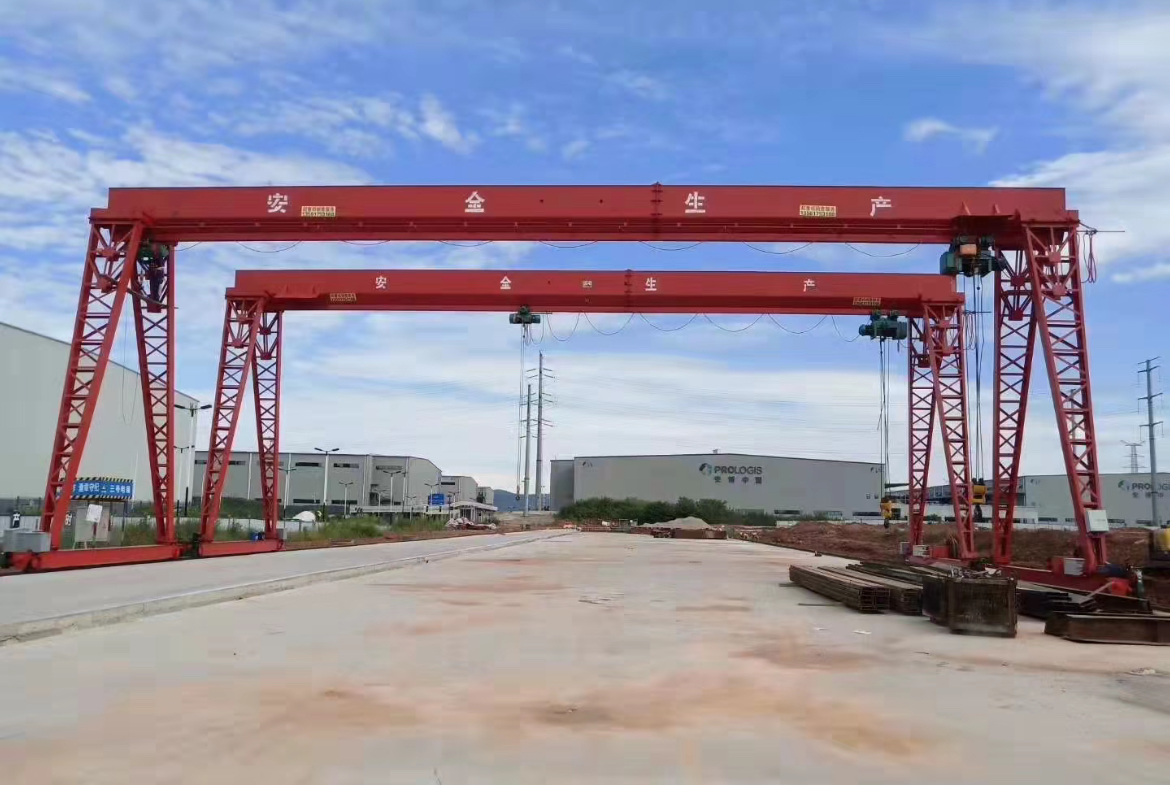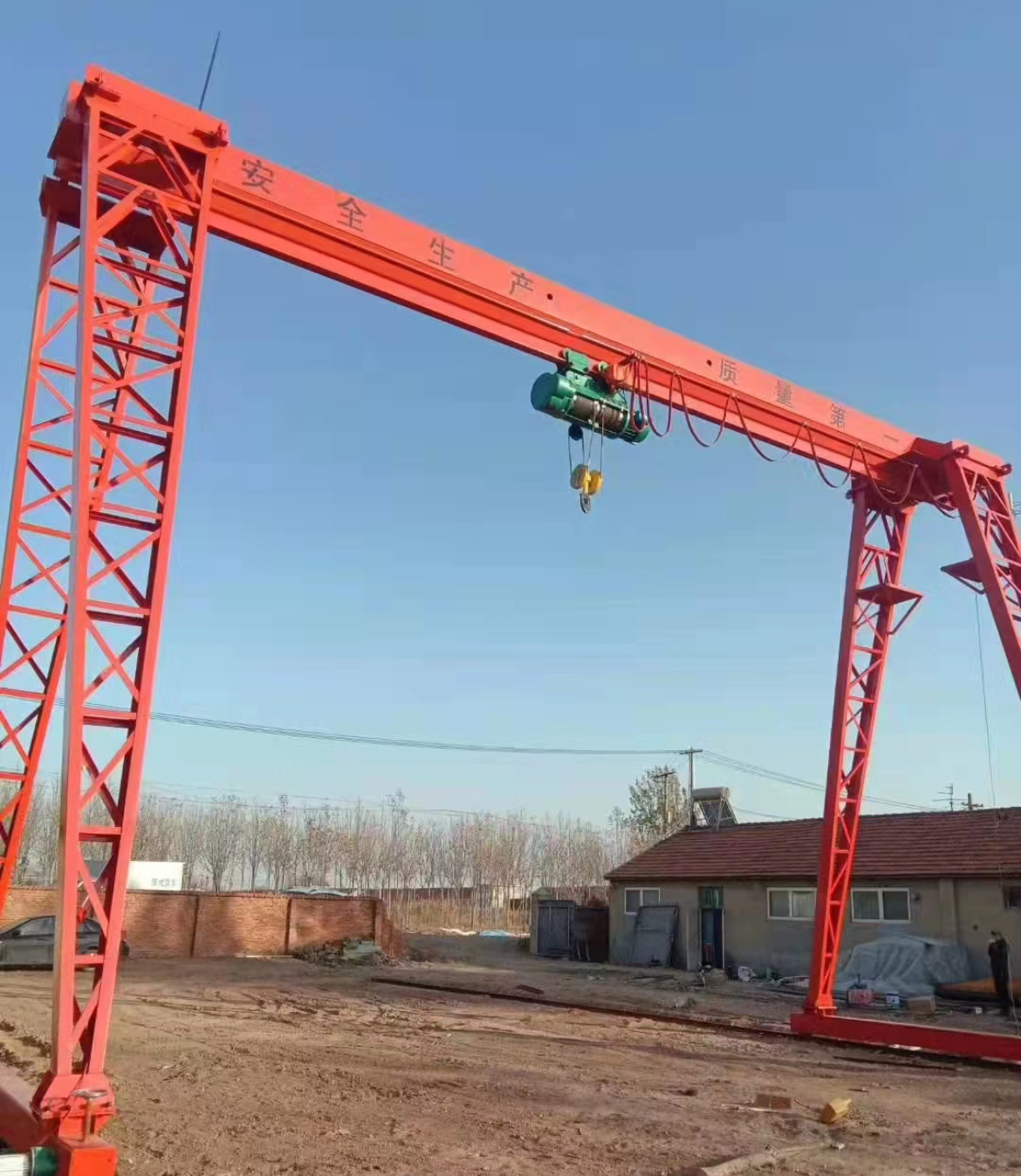Optimized operation and automatic control of portal crane
1. Optimize operation strategy
① Optimize the operation process and rationally plan the lifting sequence. According to the characteristics of the loading and unloading tasks and the distribution of materials, formulate a scientific and reasonable lifting sequence. For example, in the bulk cargo loading and unloading operation at the port, if there are multiple ships waiting for loading and unloading at the same time, the ships with high full load rate and convenient loading and unloading positions should be operated first, and the piles of materials close to the gantry crane track and concentrated should be lifted first. By optimizing the lifting sequence, the idle time of the crane and unnecessary luffing and rotation actions can be reduced, and the operation efficiency can be improved. For example, the intelligent scheduling system can automatically generate the best lifting sequence plan based on information such as the arrival time of the ship, the type and quantity of cargo, and the storage situation in the yard, which can increase the average operation efficiency of the crane by 20% - 30%.
② Efficient material transfer path design Efficient transfer path from the material grabbing point to the placement point. Within the working range of the gantry crane, consider the coordinated action of its luffing, rotation and lifting mechanism to complete the material transfer in the shortest time and with the least energy consumption. For example, spatial geometry algorithms and kinematic models are used to calculate what combination of amplitude change, rotation angle and lifting height can be used to quickly place the material at the designated storage yard or transport vehicle after grabbing the material from a certain position in the cabin. At the same time, combined with environmental factors such as wind speed and direction monitored in real time, the transfer path is dynamically adjusted to ensure high operating efficiency under different weather conditions.

2. Automatic material identification and grabbing
① Visual recognition technology
Install visual sensors (such as industrial cameras, laser radars, etc.) on the grab or spreader of the portal crane, and use computer vision technology to identify and locate materials. The visual sensor collects images or point cloud data of the material, and then analyzes the data through image processing algorithms (such as target detection, feature extraction, 3D reconstruction, etc.) to determine the position, shape, size, posture and other information of the material. For example, when loading and unloading containers at the port, the visual system can quickly and accurately identify the position, model and status of the corner parts of the container, thereby providing accurate grab position and posture information for the grab or spreader. For bulk cargo, the visual sensor can estimate the volume and weight of the material based on the stacking shape and surface characteristics of the material, so that the crane can reasonably adjust the grab force and position to achieve precise grabbing, improve operating efficiency and the accuracy of material handling.

② Intelligent grabbing algorithm
Based on the results of visual recognition, the intelligent grabbing algorithm is used to control the action of the grab or spreader. The intelligent grabbing algorithm comprehensively considers factors such as the characteristics of the material, the mechanical structure of the crane and the kinematic model to determine the best grabbing strategy. For example, when grabbing irregularly shaped bulk cargo, the algorithm will calculate the optimal opening angle and descent path of the grab bucket based on the center of gravity and shape characteristics of the material, ensuring that the grab bucket can stably grab the material and prevent it from slipping. During the grabbing process, the algorithm can also monitor the contact between the grab bucket and the material in real time, and adjust the grabbing force and action in time according to the feedback information, thereby improving the success rate and efficiency of grabbing and reducing the loss and waste of materials.
3. Fault diagnosis and intelligent maintenance
① Fault diagnosis based on artificial intelligence
Therefore, artificial intelligence technology (such as artificial neural network, support vector machine, etc.) is used to establish a fault diagnosis model for portal cranes. The fault diagnosis model is trained and optimized by collecting a large amount of data under normal operation and fault conditions of the crane (such as operating parameters of each mechanism, vibration signals, current and voltage signals, etc.). When the crane is running, the real-time collected data is input into the fault diagnosis model, and the model can automatically determine whether there is a fault and the type and location of the fault. For example, the neural network model can accurately diagnose the fault type of the motor (such as short circuit, open circuit, overload, etc.) by learning the waveform change characteristics of the motor current under different fault conditions. This fault diagnosis method based on artificial intelligence has high accuracy and adaptability, can quickly discover potential fault hazards, reduce equipment downtime, and improve production efficiency.
②Intelligent maintenance system
Combine the fault diagnosis results with the equipment's operating data to establish an intelligent maintenance system. The system automatically generates maintenance plans and task lists based on the actual operation of the crane. For example, when the fault diagnosis system detects that the wear of a key component is close to the limit, the intelligent maintenance system will arrange the maintenance task of replacing the component in advance and automatically reserve the required parts and tools. At the same time, the intelligent maintenance system can also track and manage the work of maintenance personnel to ensure that maintenance tasks are completed on time and with high quality, improve the maintenance efficiency and management level of the equipment, and extend the service life of the equipment.

